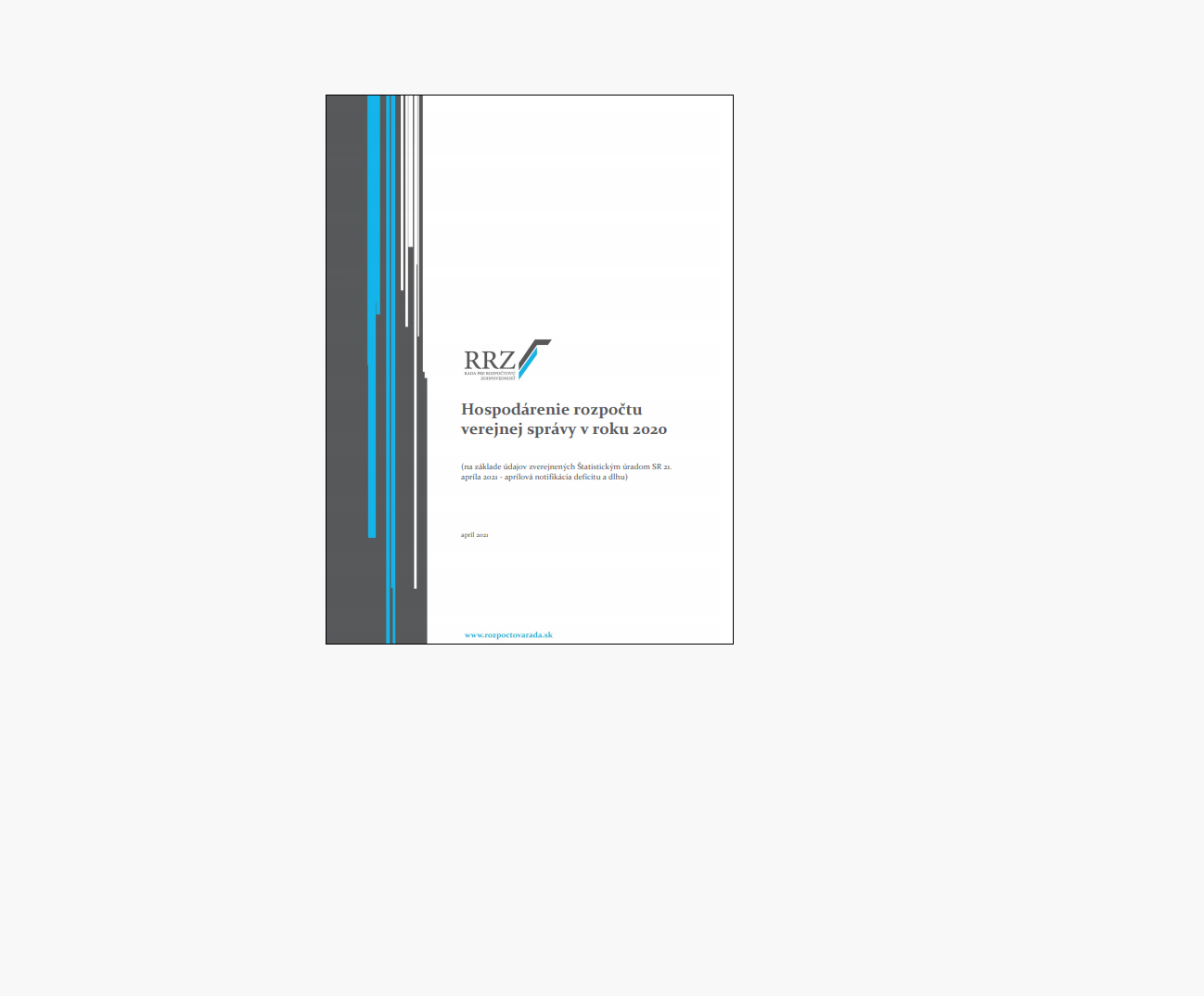The development in Slovakia’s public finance was adversely affected by the COVID-19 pandemic throughout 2020.

2020 General Government Budget Results
- 22. 4. 2021

The development in Slovakia’s public finance was adversely affected by the COVID-19 pandemic throughout 2020.
The general government deficit reached the level of 6.16% of GDP and, for objective reasons, it was impossible to achieve the target deficit of 0.49% of GDP as set under the approved budget. The balance worsened by 4.8. p.p. of GDP year-on-year, with the deficit-to-GDP ratio having swelled up to the highest level since the crisis year of 2010.
The negative effect of the pandemic on the general government balance amounted to EUR 3.4 billion (3.9% of GDP ). With the pre-crisis setting of the economic policy, the deficit could have reached EUR 2.4 billion (2.5% of GDP), excluding the impacts of the pandemic, compared to the target deficit set at EUR 0.48 billion (0.5% of GDP). The deviation of EUR 1.95 billion (2.0% of GDP) from the approved target would thus have been the largest one since the crisis year of 2009, slightly exceeding the overall risks estimated by the Budgetary Traffic Lights at the level of EUR 1.9 billion before the outbreak of the pandemic, too. The economic policy pursued after the election, crisis measures excluded, resulted in an additional decrease in the final deficit by EUR 0.2 billion (0.2% of GDP).
From the point of view of a medium-term burden on public finance, it is better to focus on the structural deficit indicator (i.e., a deficit that will automatically last even into the future, if no additional measures are adopted). The exceptional circumstances made it even clearer how unfit the pro-cyclical fiscal policy pursued over the past years had been. Even though there had been enough room to achieve a balanced budget in the previous years, the structural deficit – before the outbreak of the pandemic, at the end of the good times with unemployment attacking the historic lows – amounted to as much as 2.4% of GDP and had a major share (71%) in the last year’s overall negative structural balance. The pandemic increased the structural deficit by 1.2% of GDP, whereas the economic policy after election improved the deficit by moderate 0.2% of GDP.
The Slovak public finance had not been prepared for the crisis, neither in terms of the size of deficit nor the level of public debt. We entered the crisis with an estimated deficit at the level of 2.5% of GDP, dangerously approaching the threshold Maastricht deficit of 3% of GDP. At this level, there is not enough manoeuvring room to cope with larger cyclical fluctuations in the economy, let alone with serious crises. If the medium-term objective of having a structurally balanced budget had been achieved before the outbreak of the crisis, which the government had repeatedly postponed, the overall deficit would have been EUR 2.2 billion lower (2.4% of GDP) in 2020. Alternatively, we could have afforded to provide an accordingly larger one-off incentive in the year of crisis, while having the public finance in considerably better conditions in terms of long-term sustainability.
Gross debt amounted to 60.6% of GDP, the highest-ever level of Slovakia’s public debt. The year-on-year increase in debt by 12.3 p.p. of GDP also means that the debt overshot the highest sanction bracket of debt break set at 57% of GDP. However, in addition to the high budgetary deficit, the year-on-year increase in debt was also driven by an increase in the government’s cash reserve amounting to 5.3 p.p. of GDP. Therefore, if we want to assess development in debt, it is more advisable to look at net debt which showed a lesser increase by 7 p.p. to 50.6% of GDP.